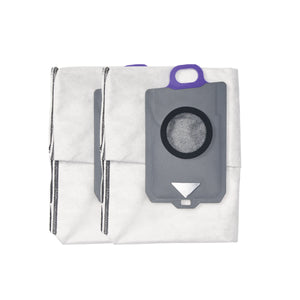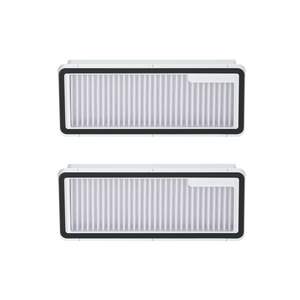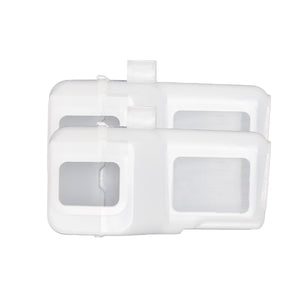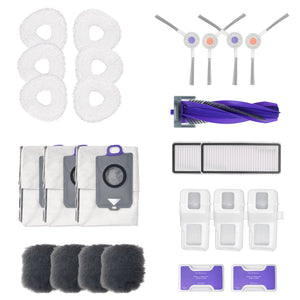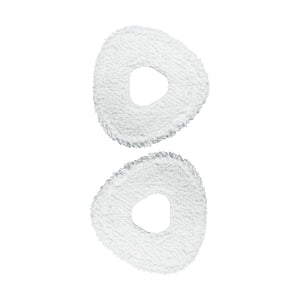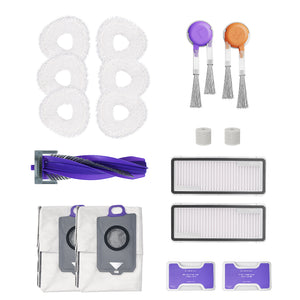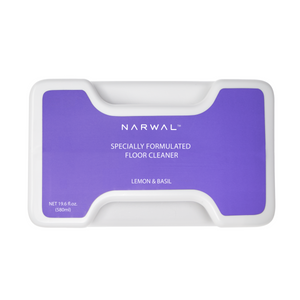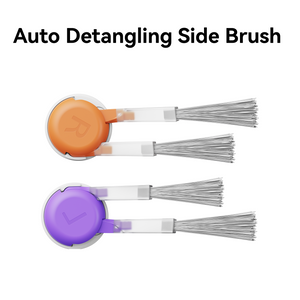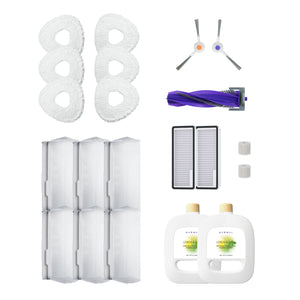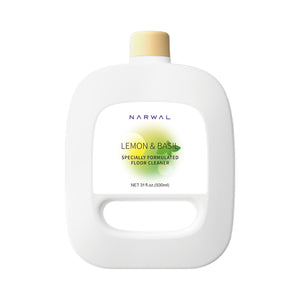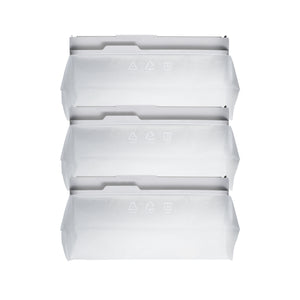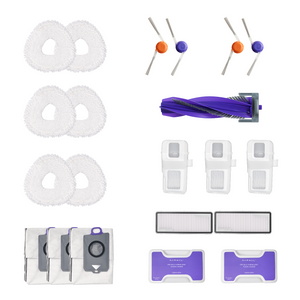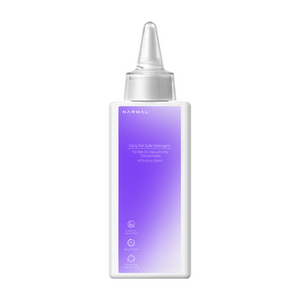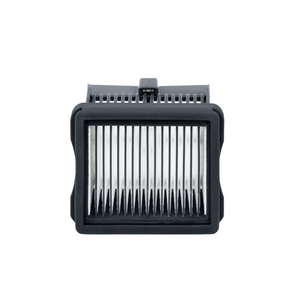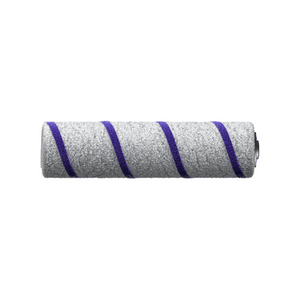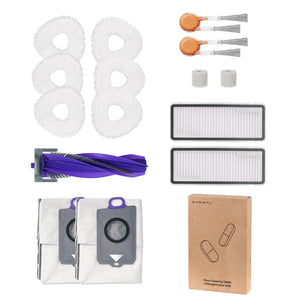Robot vacuum cleaners have become a staple in modern households, offering a convenient way to maintain cleanliness with minimal effort. These devices promise efficient floor cleaning without the need for manual intervention.
However, over time, users may notice a decline in the vacuum's performance, specifically in its suction power. Ignoring the cleaning of filters can greatly reduce the cleaning efficiency of vacuum cleaners, which is an issue that every user should pay attention to. In this comprehensive guide, we will delve into the common causes of suction loss in robot vacuum cleaners and provide practical solutions to restore their functionality.
Causes and Solutions
Clogged Filters
Cause: Filters play an important role in robot vacuum cleaners by intercepting dust, dirt and allergens and preventing them from being re-dispersed into the air. However, over time, filters may become clogged due to dust accumulation, affecting suction and airflow. Therefore, regular cleaning of filters is essential to maintain optimal cleaning results.
Solution: When cleaning washable filters, rinse thoroughly with warm water until the water is clear and avoid using chemical cleaners to avoid damaging the filter. After cleaning, dry thoroughly before installing to prevent mold growth. For non-washable filters, tap them gently to remove loose debris and replace them every few months or as recommended by the manufacturer.
Additional Tip: To maintain cleaning efficiency, it is recommended to always have replacement filters on hand to ensure that clean filters are available at all times.
Blocked Brushes
Cause: Robot vacuums use various brushes, including side brushes and main brushes, to agitate and lift dirt from the floor. These brushes can easily become entangled with hair, threads, and other debris, hindering their movement and efficiency.
Solution: Regularly inspect and clean the brushes. When maintaining the main brush, you can use scissors or a special cleaning brush to remove tangled hair and debris to keep it running smoothly. Many robot vacuums have detachable brushes that make this process easier. For side brushes, gently pull off any hair or fibers wrapped around them.
Additional Tip: Schedule regular maintenance sessions to check and clean the brushes, especially if you have pets that shed frequently.
Full Dustbin
Cause: A full dustbin can severely impact the suction power of a robot vacuum. When the dustbin is overloaded, it restricts airflow, leading to a significant drop in suction.
Solution: Make it a habit to empty the dustbin after each cleaning session or whenever it reaches its maximum capacity. This simple step ensures that the vacuum operates at peak efficiency.
Additional Tip: If your vacuum has a small dustbin, consider emptying it more frequently during cleaning sessions to maintain consistent suction power.

Blocked Air Ducts
Cause: Air ducts in the vacuum can become blocked by large debris or accumulated dust, reducing suction power. This blockage can occur anywhere along the airflow path, from the brushes to the dustbin.
Solution: Check the air ducts regularly and remove any obstructions. Use a long, flexible brush or a similar tool to reach and clear the ducts. Ensuring a clear airflow path helps maintain strong suction.
Additional Tip: If you notice a sudden drop in performance, inspect the air ducts immediately to prevent further issues.
Damaged or Worn-Out Parts
Cause: Over time, various components of the vacuum, such as seals, gaskets, and belts, can wear out or get damaged. These issues can lead to a loss of suction as the vacuum's internal mechanisms are compromised.
Solution: Regularly inspect the vacuum's components for any signs of wear and tear. Replace damaged or worn-out parts promptly. For specific replacement parts and operating instructions, it is recommended to consult the user manual or contact the manufacturer for detailed instructions.
Additional Tip: Keep a maintenance log to track when parts were last inspected or replaced, helping you stay on top of upkeep.
Battery Issues
Cause: For battery-operated robot vacuums, a weak or faulty battery can affect performance. As the battery ages, it may not hold a charge as well, leading to shorter cleaning cycles and reduced suction power.
Solution: Battery maintenance is also important to ensure that it is fully charged and stable. If the battery life is significantly reduced, it is recommended to replace it with a new battery and follow the manufacturer's guidelines to choose the right battery type and replacement procedures.
Tip: Avoid charging the battery after it is completely exhausted to help extend the battery life.
Incorrect Height Settings
Cause: Some high-end robot vacuum cleaners are equipped with adjustable height settings to suit the needs of different floor materials. If the vacuum is set too high, it might not create enough suction to pick up dirt effectively, especially on hard floors.
Solution: Adjust the height setting to ensure it’s appropriate for the surface being cleaned. Lower the height setting for hard floors and raise it for carpets to maintain optimal suction.
Additional Tip: Experiment with different height settings to find the best performance for your specific floor types.
Recommendation: Narwal Freo X Ultra

If you're tired of dealing with these common issues, consider upgrading to the Narwal Freo X Ultra. This advanced robot vacuum is designed with user convenience and efficiency in mind. It features powerful suction, self-cleaning capabilities, and a smart navigation system that ensures thorough cleaning.
Key Features:
Powerful Suction: Narwal Freo X Ultra has one of the strongest suction powers on the market, 8200 pa. The excellent performance of Freo X Ultra can catch even the smallest particles deep in the carpet.
Self-Contained Dust Disposal: Ordinary robot vacuums empty the dust into the base station on their own, which is a noisy and messy process. Freo X Ultra can compress dust into a large-capacity disposable dust bag, achieving maintenance-free cleaning for up to 7 weeks, making cleaning simple and efficient.
Intelligent Navigation: Equipped with advanced sensor and mapping technology, triple laser obstacle avoidance, and EdgeSwing™ technology enable it to navigate efficiently in your home, avoid obstacles and cover every corner.
Zero Tangle Brush: Narwal Freo X Ultra uses a revolutionary and innovative technology that fixes the tapered cleaning brush on a single floating arm so that hair and pet hair will not get trapped. Freo X Ultra is SGS and TÜV certified with a 0% tangle rate and removes 99.5% of hair instantly.
Long Battery Life: 5200mAh lithium-ion battery ensures up to 3.5h cleaning time without performance degradation.
With Narwal Freo X Ultra, you will easily step into a cleaner living space.

Conclusion
Maintaining the strong suction power of the robot vacuum cleaner is the key to maintaining a clean home. Regular maintenance such as cleaning the filter, emptying the dust box and checking for blockages can effectively prevent the suction power from decreasing. If you find that your vacuum still struggles with performance despite these efforts, it might be time to consider a higher-quality model like the Narwal Freo X Ultra.
FAQs
How often should I clean the filters on my robot vacuum?
Regarding the frequency of cleaning the filter of a robot vacuum cleaner, it is recommended to clean it at least once a month. If there are pets or a lot of dust in the house, the cleaning frequency should be increased accordingly.
What should I do if my robot vacuum's suction doesn't improve after maintenance?
Check for any damaged or worn-out parts and replace them as needed. If the problem persists, consider consulting the manufacturer or seeking help from a professional repair service.
Can using the wrong height setting affect suction?
Yes, using a height setting that’s too high can reduce the vacuum's ability to create suction. Adjust the height to match the floor type for optimal performance.





















